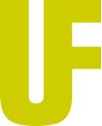You are here
Day 4 - June 19th
By Joël Geerlings
Much to early it was time to ‘wake up and get outdoors’. The breakfast at the Best Western Hotel was very good with fresh baken waffles and off course bagels and muffins. The suitcases were loaded in the mega-vans again and it was time to leave for the first company visit of the day. After checking out the other location of Genum, we arrived at the correct Genum location at 9.05. At this site Hossein Shakiba welcomed us. He told us that we had the pleasure of receiving the introduction by David Lynch, one of the general managers of Genum, because at Genum they very much value the contact with students. In a room with very comfortable chairs we got to hear the success story of Genum. In 1973 the company was started in Burlington and in 1983 Genum went public. They didn’t really need the money, so now they have too much cash. Therefore at the moment they are looking for acquisition opportunities. Furthermore they never ended a year with loss. Most business is done in Japan (33%), followed by 25% in Europe (with two locations in the UK) and only 10% in Canada itself. Genum is active at three different areas:
Genum has a long list of first introductions and received a technology Emmy in 2006 for SDI (serial digital interconnect) system in which development they were involved. Subsequently the three business areas were discussed with examples, most of them about video and image processing because these areas are most appealing to students. Several interesting developments at Genum are:
A new technology under development at Genum is MC-FRC (Motion Compensated Frame Rate Conversion). Older products are manufactured in Genum’s own bi-polar fab but new products are sent to foundries. Then at 10.00 hour it was time for a coffee break with donuts. Followed by a demonstration of what the VXP (visual excellence processing) chips can do with a video signal. In order to make this demo as interactive as possible the demonstration engineers of Genum awarded each question with a flashing pen and a 50-year calendar paperweight. This strategy worked, and many questions were asked. At 12.20 the demo ended and it was time for a very tasty lunch. After the lunch, the other location site of Genum was visited again for a short tour. During this tour an explanation for holes in wafers was given (amongst others). Unfortunately the CEO had no time to say goodbye. But Hossein was also very delighted with our wooden shoes and preliminary report gift. At 14.20 we left for Waterloo for our visit to Research in Motion (RIM). Here we received an explanation about the co-op system by campus recruitment team member Dan Albrechts. Co-ops are very common in Canada; students can work at a company for one term, study one term and then again one work term followed by a study term. RIM employs 400 co-op students per term and has 100 internships a year. RIM started as a small company with 15 persons and grew in 23 years to a company with headquarters over the whole world. After this introduction, our group was split in two. The first group was lead on a small tour while the other could attend a presentation by Karin Klink (one of the first 1000 employees of RIM). During the tour a showcase with several BlackBerries could be seen. Furthermore the anechoic chambers were shown. Here BlackBerries are tested on FCC regulations (radiation they transmit and radiation they can sustain). Also the effect of radiation on the human body is tested with test dummies filled with liquids. The presentation was mainly on the enormous success of the BlackBerry. Where the Windows mobile is no competition at all (because of the reliability and security of the BlackBerry). The new BlackBerry Pearl is more focused on the consumer market. Unfortunately no revelations on further developments on the BlackBerry could be made. The only thing we found out is that a future BlackBerry with touch screen is very unlikely (due to the high power consumption of a touch screen). At 17.30 the presentation ended, and we left the building with a nice Inukshuk statue gift. After a short trip we arrived at the Waterloo campus were we checked in at St. Pauls dormitory. The two-persons rooms had been refurnished by donations of alumni according to the signs at the doors. Around 19.00 it was time for dinner. At the food plaza there was enough choice for a good dinner for a reasonable prize. Back in the dormitory we could relax from a very interesting and instructive day in the recreation room with a football-, pool- and table tennis- table. After which it was time to sleep.
- roderickc's blog
- Log in to post comments






